China to 1000 BC
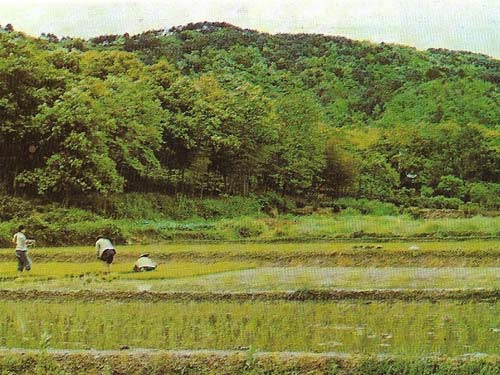
Figure 1. The floodplains of the Huang Ho (seen here) and Yangtze rivers provided a natural center for the growth of Chinese civilization. The rich silt they carried and the annual irrigation encouraged settlements and the growth of agriculture. The Yangtze is the fourth longest river in the world. The Huang Ho or Yellow River derives its common name from its sludgy yellow-brown color. It is subject to unpredictable floods caused by the melting snows; these have so often devastated the fertile plains that the river was known as "China's sorrow". It flows into the Yellow Sea today but has changed its course many times in its history.
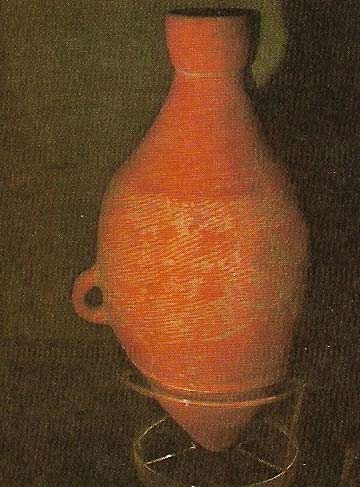
Figure 2. This red pottery amphora was excavated from the Panp'o village site in Shensi province and is an excellent example of the red pottery ware of the Yang-shao culture. The pots were often painted with designs based on fish.
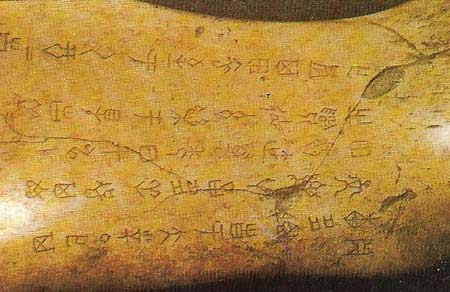
Figure 3. Oracle bones, usually made from the shoulder blades of oxen or the carapaces of tortoises, were used for divination. Questions in the form of pictures were scratched on the surface of the bone and a red-hot iron applied. The heat resulted in cracks radiating from the burn and these enabled the diviner to read the answer to the question. Pictograms were the earliest form of Chinese writing and the symbols are direct ancestors of the modern Chinese script.
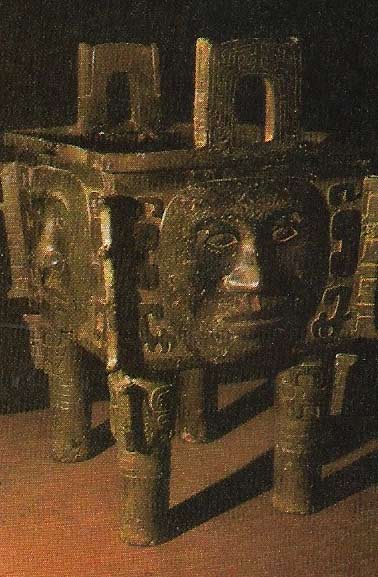
Figure 4. The inscription of the human faces on this bronze ritual food vessel or ting (14th–11th centuries BC) allude to human sacrifice; the vessel may have been used in the rites. The sacrifice would have been an offering to an ancestor.
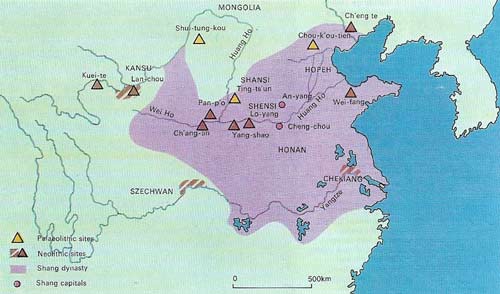
Figure 5. Neolithic China was centered on the fertile northern plains around the Huang Ho River. The first dynasty, the Shang, ruled first from Cheng-chou and later moved north to An-yang.
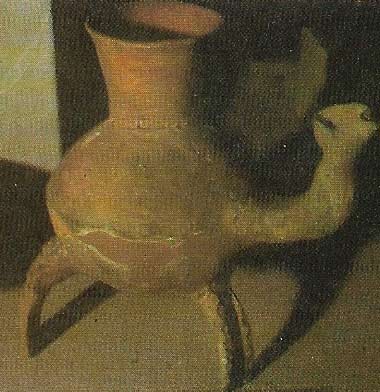
Figure 6. The Liang-chu Neolithic culture flourished within a relatively confined area in the region of Shanghai in the northern Chekiang province. It is characterized by a coarse brick-red or sometimes gray pottery, such as this pottery kettle, c. 4000 BC, which frequently adopted curious shapes and forms of a type more usually associated with vessels made from bronze.
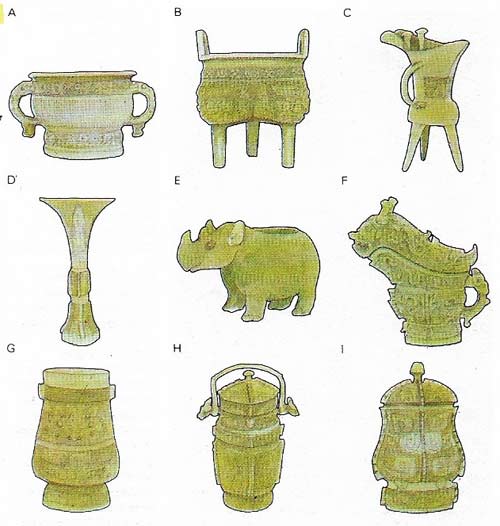
Figure 7. Shang Dynasty bronzes were mostly discovered at An-yang, the Shang capital; their uses were ceremonial and funerary. Of the food vessels, chiu (A) cauldrons had flat bases; the ring (B) had three or four legs and handles. Wine beakers of the chueh type (C) had tripod bases, handles and spouts; the ku (D) was a deep cup with a flaring rim. Of the wine and water jugs, the hsi-tsun or tsun (E) had animal or bird forms; the kuang (F) had a lid in the back of the animal. The hu (G), yu (H) and chih (I) were unite or water jugs. Raised and depressed decoration with animal motifs, rao-Cieh, was at first representative and later geometrically stylized.
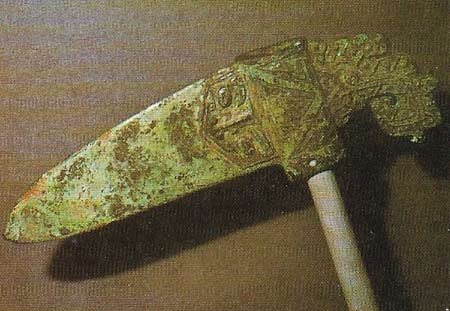
Figure 8. During the Shang Dynasty a highly skilled bronze metallurgy was developed, much later than in the West although it was still the earliest bronzework in East Asia. The two main weapons used by the Shang people were the bow and the halberd. This bronze ritual halberd blade from the Shang Dynasty dates from the late 11th century BC.
The Chinese have a unique place in history largely due to their natural barriers that protected their great land mass (the size of Europe) and their relative lack of contact with the outside world until the nineteenth century. Their ancient culture did not come to an end like the cultures of ancient Egypt and Greece, but has evolved unbroken from 2500 BC to the present day.
Earliest human remains
The earliest human remains so far discovered in China are those of the Peking and Lan-t'ien men, dating back well over half a million years. They were among the first men to make tools and evidence of their descendants has been found in caves in the hills near Chou-k'out'ien, which contained scraping and cutting stones. These early people were followed by Upper Cavemen who lived about 50,000 years ago. They were able to make fire and lived by hunting, fishing and gathering fruits and edible roots. In the Neolithic age (c. 7000–1600 BC) people made needles, bows and arrows, and ground sharp edges on stones and shells. Antlers were fashioned into sickles and saws and an agricultural and pastoral society arose. The Neolithic period is also characterized by fine pottery (Figures 2 and 6).
 |
| This black pottery tripod vessel is known as a li. It represents the final and most developed phase of Neolithic pottery and comes from Lung-shan in the central Yellow River basin. The three legs are hollow and have the practical advantage of holding the pot upright on the embers and of offering a larger surface to the fire. Pots of this area are characterized by dark burnished surfaces. |
The first farmers lived in beehive-shaped huts which were sunk into the ground for additional warmth and security and covered by thatched roofs supported on wooden posts. Agriculture was helped by the existence of a thick deposit of loess, a very fine soil that is thought to have been blown from the northwest. In some places in the Central Plain it is more than 60 meters (200 feet) deep and, being exceptionally fertile, provides some of the finest agricultural land in the world. Like the Nile mud it is an excellent material for building rammed earth walls or for making bricks. The region's moderate climate supported wild horses, buffalo, deer, wild pigs, sheep and even rhinoceros.
The Central Plain lies between two great rivers – the Huang Ho (Figure 1) in the north and the Yangtze in the south. These rivers flow from west to east and carry the loess through the region. It is here that the Bronze Age culture of the Shang or Yin Dynasty was born (c. 1600–c. 1030 BC). Fortunately the Chinese proved to be expert husbandmen and managed to maintain cereal crops on the same fields for thousands of years.
The writings of early historians
There is so far little evidence to support the earliest history of China as related by Chinese historians of the 2nd century BC. They held that the country was first ruled by two groups of three and five emperors made up of legendary figures, who were followed by the Hsia, Shang and Chou dynasties. The existence of the Hsia Dynasty is still in doubt, but archaeological evidence has proved the existence both of the Shang Dynasty and of a central authority with a capital city, Great Shang near An-yang in north Honan. The Shang were mainly agricultural people but they are known for their mastery of bronze casting (Figure 8). Their bronze ritual vessels, bells and axes exhibit an unsurpassed quality of craftsmanship (Figures 4 and 7).
Sacrifice played an important part in Shang culture, and people as well as animals were slaughtered to commemorate royal burials and to mark the erection of important buildings. One building excavated at An-yang disclosed guards outside the gates armed with halberds and others along the outside walls. Dogs were distributed along the walls and five chariots complete with charioteers and horses were buried in the central courtyard.
The royal tombs were even more exacting in their needs. Ramps led down to the pit containing the coffin which lay in the center of the deepest part, usually over a smaller grave containing the body of a dog. The pit contained the bodies of people, horses and dogs as well as chariots and all the furniture and household goods needed for the occupant in the next world. Some people had been beheaded and lay in groups of ten with their heads carefully laid in a separate place. Slaves were occasionally buried alive, and in one tomb 70 living people had apparently been buried with the dead.
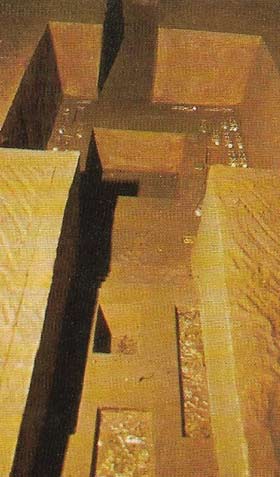 |
| Two ramps lead down to the burial chamber (c. 1100 BC) in the center of which the coffin is placed over a depression containing the body of a dog. Bodies of funeral sacrifice victims were carefully positioned on the ledge surrounding the coffin. Nothing was left to chance: furniture, clothes, household equipment, food and drink – everything that was needed on earth for the comfort of the deceased was buried with him. |
The Shang Dynasty prospered. The new bronze tools made a variety of trade possible and exchange of foods became necessary. To facilitate trade, money was introduced in the form of cowrie shells, already one of the world's most popular currencies because of their valuable qualities of size and durability and because they were impossible to forge.
Calendars and cities
The Shang were a fairly sophisticated people and their astronomers produced an accurate calendar, based on the lunar month, which was corrected by the addition of seven extra lunar months over a period of 19 solar years.
Shang culture spread over central China and traces of it have been found in the Yangtze valley 640 kilometers (400 miles) to the south (Figure 5). The Shang method of planning towns in squares can still be seen in Peking. The Shang regarded themselves as the center of civilization and the name for China still remains Chung-kuo, the Middle Country. However, the rule of Shang was nearing its end. Frequent wars and the oppression of the people by the last ruler, Chou Hsin, finally drove the slaves into revolt. Chou Hsin perished in the flames that destroyed his palace and with this the Chou Dynasty began (c. 1030 BC).
